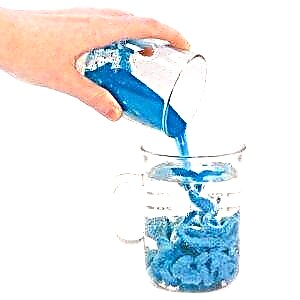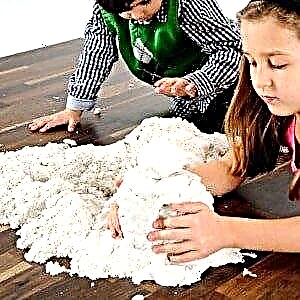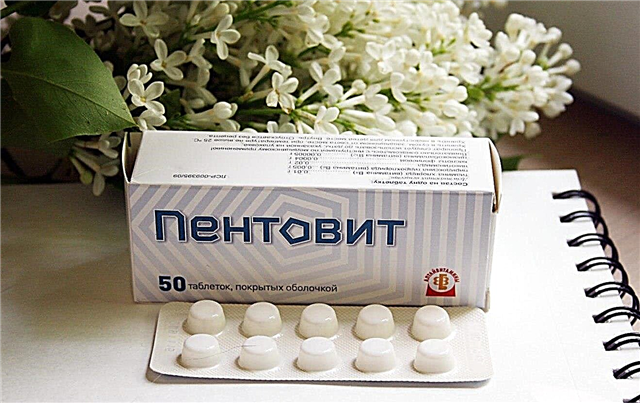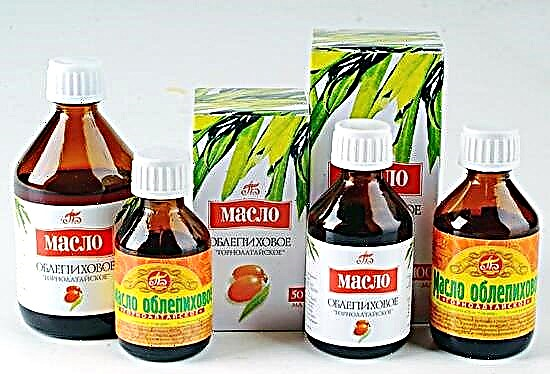Sandbox games are an invariable attribute of childhood, but such fun was allowed only in the summer and only if the weather was good. But everything changed a few years ago, when kinetic sand appeared on the shelves - a new and unusual plastic material.
With its help, it became possible to organize a home sandbox, which has multiple useful qualities: compactness, practicality, absence of dirt on children's palms and carpet, safety.
In addition, homemade sand is no less useful than ordinary sand, because it also provides the widest scope for creativity and creation. Parents should pay attention to this material, its advantages and new opportunities.
What is kinetic sand?
Kinetic is an innovative material developed by scientists from Sweden that is designed to play with a child. All new qualities are provided by the unusual composition of the substance.
 98% of the kinetics consists of ordinary quartz sand, the remaining 2% is represented by the synthetic silicone additive E900. Despite the minimal presence, it is this additive that provides new properties of kinetic sand.
98% of the kinetics consists of ordinary quartz sand, the remaining 2% is represented by the synthetic silicone additive E900. Despite the minimal presence, it is this additive that provides new properties of kinetic sand.
The invented material outwardly resembles the sand we are used to, but it is more plastic. It combines fluid properties and the ability to take a given shape, density and the presence of numerous pores. The grains of sand in such material are held together by polymer bonds.
Thus, the kinetic is not scattered by separate particles, but is a homogeneous mass that can be easily collected by hand and placed in a container. At the same time, the sand does not leave dirty or greasy marks on hands and surfaces.
The silicone additive used to make kinetic sand is also used in the food industry. That is why it is considered completely safe and cannot harm the child. The only exception is allergy to this substance.
Why is it needed?
Quite often, mothers are interested in: why buy new material if there is a sandbox with ordinary sand nearby. The answer is obvious: in the autumn-winter period it is impossible to play in it for objective reasons, and you can make cakes from kinetic sand all year round.
There are other serious arguments in favor of classes with innovative material:
- Sterility... It is common knowledge that sandpits are visited not only by babies, but also by dogs and cats, which leave excrement in the sand. As a result of fiddling in the yard sandbox, helminth eggs and pathogenic microorganisms fall on the child's hands. Kinetic eliminates the threat of infection with infectious agents.
- Elimination of risks... Children in the sandbox often throw sand at each other. This kind of fun will cause this loose material to get in your eyes or mouth. Playing with kinetic sand almost completely eliminates such an undesirable consequence.
- Developing factor... Sand for playing at home helps to develop concentration, fine and gross motor skills, and imagination. Providing the child with various molds (for cookies, glasses, LEGO elements), you can get completely unexpected buildings.
- Sedation... Like standard sand, kinetic material also helps to relax and calm the child. Working in a home sandbox allows you to get rid of stress, relieve stress, after which the baby falls asleep more quickly and suffers less from nightmares.
Thus, kinetic can be used for a wide variety of purposes: educational, therapeutic and entertainment. But in any case, the benefits of such activities will be obvious to all participants in the process.
Advantages and disadvantages of the material
The advantages of kinetic sand are based primarily on its physical properties, which were mentioned above, and its unique chemical composition.

Other advantages mothers who have already tested this innovative material with their kids say:
- kinetic sand cannot dry out, even if left out in the open. For several years, it is able to maintain a viscous consistency, resembling wet sea sand;
- this material is not "attractive" for pathogenic microorganisms, therefore it is almost impossible to pick up an "infection" when playing with it;
- homemade sand does not lose its properties when exposed to water. That is why it can be washed under the tap and then dried without fear for the quality of future crafts;
- due to the increased plasticity, modeling becomes easier and more enjoyable. The features of the sandy structure are such that the sculpted figures do not crumble, do not creep, but retain their original shape for a long time;
- Kinetic is easy to clean as it does not stick to dry palms, glass, plastic and metal surfaces. You can collect the parts with the help of another lump - they will stick to it, like iron to a magnet.
However, the kinetics also have certain disadvantages that experienced parents mention:
- "Freshly opened" material emits an unpleasant odor that resembles vinegar or glutinous amber. After a while, it disappears;
- the material has low flowability, which is why it cannot be sieved, used when playing with a mill;
- massive figures made of kinetic sand do not hold their shape well, quickly settle and spread in different directions;
- sand is not sold in all children's stores, so you often have to order it online. In addition, the cost of kinetics is quite high.
Do not use silicone molds when working with homemade sand. The kinetic sticks to the walls of the container, does not completely spill out, so you will have to use water for cleaning.
Age restrictions
According to the manufacturer's recommendations, this product can be used from three years. What are the reasons for these restrictions? This is a common precaution, as a young child pulls literally anything into his mouth that comes close to his hand.
 A similar problem can lie in wait for parents in an ordinary sandbox, but there the sand is literally teeming with pathogenic bacteria, dirt and the remains of animal excrement.
A similar problem can lie in wait for parents in an ordinary sandbox, but there the sand is literally teeming with pathogenic bacteria, dirt and the remains of animal excrement.
Thus, sand for home play can be used without much fear from the age of one, of course, under parental supervision. The kinetic is harmless, so even if the child accidentally swallows it, you should not panic.
Quartz mineral and silicone polymer do not react with the digestive juice, but are naturally excreted from the body in an unchanged composition.
Varieties of material and its cost
The proprietary sandy miracle material from the Swedish manufacturer Waba Fun is sold in different packaging: 1 and 5 kilograms (in the latter case, the package contains two packages of 2.5 kg each, so sellers often sell them separately).
Recently, the company began to produce a colored product in yellow, red, green, blue, purple and pink shades. The packaging of such a product weighs about 2.27 kg. You can also purchase a sandbag in two colors of the same weight. The average cost is 2,000 rubles.
A multicolored kinetic is also available for sale - sand for children of unusual color, produced in the "Precious stones" series (emerald, onyx, sapphire, amethyst). The addition of iridescent particles gives the sand an amazing hue. The average price is 1,460 rubles for 454 g.
Additionally, you can purchase:
- sandboxes of different sizes (800 - 1,800 rubles);
- toys-molds for kinetic sand (about 150 rubles);
- toy scoop (50 rubles).
How much sand will it take for a child to play fully? It all depends on the age of the baby. 1 kilogram (1,000 rubles) is enough for one and a half year old children; three-year-olds already need at least 2.5 kg of sand (1,600 rubles).
And a company of several kids will need a 5-kilogram package of kinetic sand for the construction of serious structures. It will cost about 3,200 rubles.
Kinetic sand is not available in all children's stores due to the insufficient prevalence of play material, so ordering online and delivery directly to your home may be the best option.
10 interesting kinetic sand games
Sand for children's creativity is an irreplaceable thing. What can a child do with a few handfuls of this wonderful material? Experts offer 10 options for using sand.

They are very simple and do not require special knowledge and skills from parents.
- "Prints". This exercise is suitable even for a one and a half year old baby. On the sandy surface, you need to put "stamps" with various convex objects.
- "Sausages". A child cuts sausages of various sizes with an unsharp knife. You can also suggest comparing the resulting "products".
- "Molds". This entertainment gives the child his first geometric knowledge. You can use regular shapes or figures from the sorter.
- "Cake"... A confectioner child makes a custom-made cake from “cakes” of different diameters.
- "Castle". Kinetic sand can be used to build an incredibly beautiful structure with turrets and a castle fence.
- "Treasure"... Any "treasure" can be buried in the sand, the task is complicated by offering to find the treasure on the map.
- "Construction"... A dump truck and a truck will help to revive the game. The child will decide for himself what exactly he will build.
- "Drawing"... An image with a minimum of detail is drawn on the surface of the sandbox. Then the child turns away and the adult changes something in the picture. The kid's task is to find the difference.
- "Who is more likely?"... Argue with your child which one of you will build a turret faster or find a hidden treasure in the sand. The conditions of the task can be changed endlessly.
- "Maths"... A child who knows numbers can draw them with his finger in the sand or make them three-dimensional. Errors can be erased with the palm of your hand.
These are just a few of the possible kinetic sand exercises. Usually, classes are invented right next to the sandbox, and more often it is the children's fantasy that is triggered.
Instructions for use
Regardless of the safety of the material, adults should ensure that sand does not get into the oral or nasal cavity, ears and eyes of the child.
Well, in order to enjoy the unique properties of the miracle material longer, it is necessary during use and storage follow a few simple rules:
- it is better to store the kinetic in a plastic container to protect it from dust, pet hair;
- the most favorable conditions for storage are +23 ° C and humidity is about 60%. If the sand gets wet, it is enough to dry it indoors. No need to heat;
- if the sand has become less elastic, you can sprinkle it with water and crush it a little with your fingers. It will again acquire elasticity and fluidity;
- since sand easily absorbs foreign odors, you need to wash your hands every time before playing;
- you can play sand in a special sandbox or on a smooth surface (table top). It is better for girls to hide their hair under a kerchief before playing;
- after each session, you need to collect all the sand, otherwise very soon its volume will significantly decrease.
Collecting kinetics is pretty simple. It is enough to form a small lump and use it to "attract" smaller particles. In this case, you need to ensure that dirt and hair do not get into the mass. At the end of cleaning, you can use a vacuum cleaner.
How to make kinetic sand at home?
A kinetic that will resemble the original material as much as possible can be made from quartz sand, boric acid and ordinary office glue, which includes silicate.
 2 teaspoons of acid must be mixed with 1 teaspoon of glue, and then sand (300 g) must be added to them. The result of the most thorough mixing is a homemade kinetic.
2 teaspoons of acid must be mixed with 1 teaspoon of glue, and then sand (300 g) must be added to them. The result of the most thorough mixing is a homemade kinetic.
Since such material contains boric acid (and this is a toxic substance), the child should play with it exclusively with gloves.
Well, it's best to use other, safer recipes for homemade kinetic sand.
Necessary materials
To obtain non-toxic sand, it is better to use less aggressive substances. Craftsmen need to stock up on the right ingredients in advance. You will need:
- 4 glasses of clean sand. You can buy it at a zoological or hardware store. To get rid of pathogenic microorganisms, it is better to ignite the sand in the oven;
- 2 cups corn or potato starch If there is no such product at home, you can take a similar amount of corn flour;
- 1 glass of boiled water;
- food coloring.
You also need to prepare a container for mixing (an ordinary small plastic bowl will do) and a spatula for "whipping" all the required ingredients.
Method number 1
Making sand is very simple. Everything needs to be done a few basic steps:
- We combine quartz sand with starch in a container.
- Mix these components well.
- Add water to the mixture in small portions, bringing the mass to the required consistency.
Everything, the home version of the kinetics is ready, it remains only to test its properties in practice.
Method number 2
The ingredients in this case are the same. Only changes the sequence of mixing them:
- We combine starch powder with water so that a non-Newtonian liquid is obtained. That is, the mixture turns out to be similar to sour cream. If you take it in your palm and squeeze it, a lump will form, which will instantly "melt".
- Add quartz sand to the mixture.
- Mix everything well until a homogeneous mass is formed.
To get kinetics of different shades, use food coloring (as a last resort, they can be replaced with safe baby paints for babies).
The required dye must be diluted and added to the sand-starch mixture before pouring in water. Then it will be necessary to achieve an optimal consistency. If the sand hardens quickly, you can add a little water to it.
Similar materials
Play sand for home can also be live and space. No wonder parents are constantly wondering if there is a difference between these materials?
 The differences do exist, but they are minimal. For example, space sand is softer due to small grains of sand.
The differences do exist, but they are minimal. For example, space sand is softer due to small grains of sand.
Figures made from it are characterized by greater strength and clarity of contours. The cost is slightly lower than that of the kinetic one, since it is a domestic product.
Living sand, which is produced in South Korea, is distinguished by its snow-white color, since it contains not quartz sand, but shell rock. There are also differences in properties.
If a kinetic is placed in water, then it will not change its physical qualities, but living sand will simply disappear under the influence of a universal solvent.
Feedback from parents
Most parental reviews about kinetic sand are positive. Mothers are happy to note that the kids are ready to play for hours with such material. In addition, it is quite easy to clean it, you do not need to make any special efforts.
At the same time, there are reviews indicating that some children quickly got fed up with the kinetic. That is why experienced mothers recommend first buying a small package for a sample or playing with such sand from friends (another option is to prepare the kinetic at home).
If the child is tired of the purchased sand, try to remove the material in a secluded place for a couple of weeks, and only then play new games with the child with purchased molds and additional play accessories.
Childhood is a fertile period for creativity and the development of imagination. Kinetic sand is an ideal material for the realization of a child's fantasies. And joint activities with the child will help to further strengthen the parent-child relationship.



